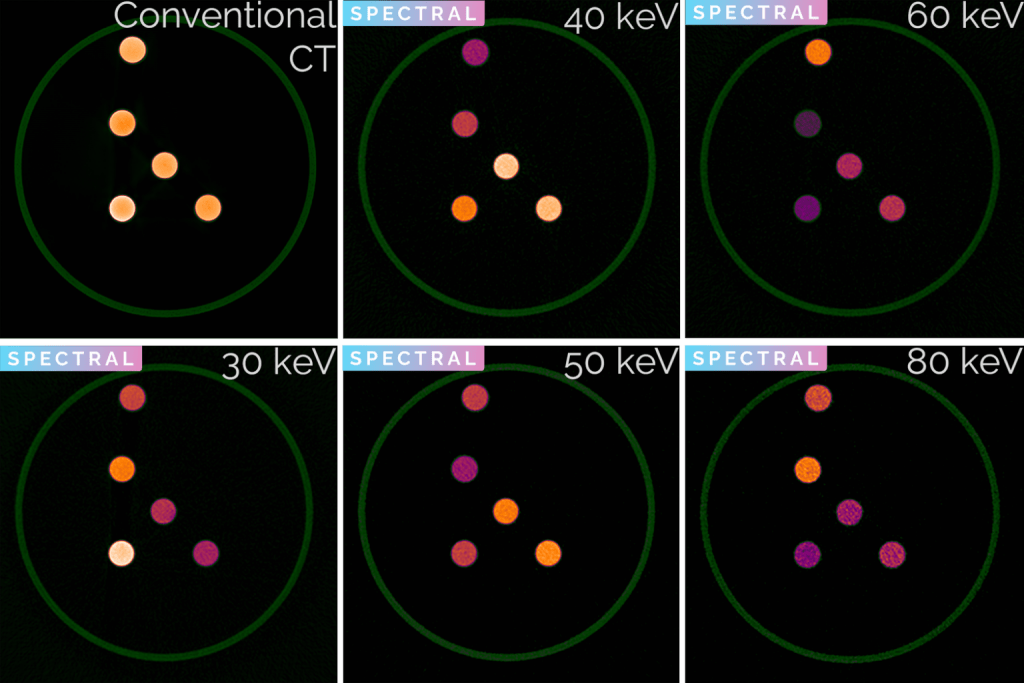Spectral CT is the first and only analytical capability for micro-CT systems. Micro-CT users now have the best of both worlds: non-destructive in-situ imaging and material composition information of the entire sample, inside & out with this new development from TESCAN.

Spectral CT provides chemical information at any point within a sample, complementing TESCAN’s state-of-the-art structural imaging capabilities. With this new development materials scientists can now see the most subtle changes in material composition and purity, and low contrast materials, such as polymers, can be differentiated from each other, which is not possible using micro-CT alone.
Spectral CT is unique in that it not only measures how many x-rays are stopped by a sample, but it also counts the individual x-ray photons. By dividing these photons based on their energy in different bins, the spectrum can be analyzed, enabling the attenuation coefficient of the sample to be precisely calculated. This allows the user to calculate densities and see contrast between different materials that are invisible using traditional micro-CT. The user can also identify unknown minerals based on k-edge imaging, remove artefacts from traditional CT scans, or calculate concentrations of different substances in a sample.

Spectral CT is an option that is available with TESCAN’s UniTOM XL, a versatile, multi-scale micro-CT system for high-throughput experiments on a diverse range of samples, and CoreTOM, for multi-scale micro-CT investigations in earth sciences. It can be added to existing TESCAN UniTOM XL or CoreTOM instruments without compromising any of the system’s features. It is a complete hardware/software solution that is integrated into the micro-CT system for extreme ease-of-use, with only one click needed to switch between structural and spectral information. A full software suite features acquisition, reconstruction and analysis of spectral data.
You might also be interested in “Distinguishing Chemical Changes in Polymers Using Enhanced Contrast & Spectral CT“.
